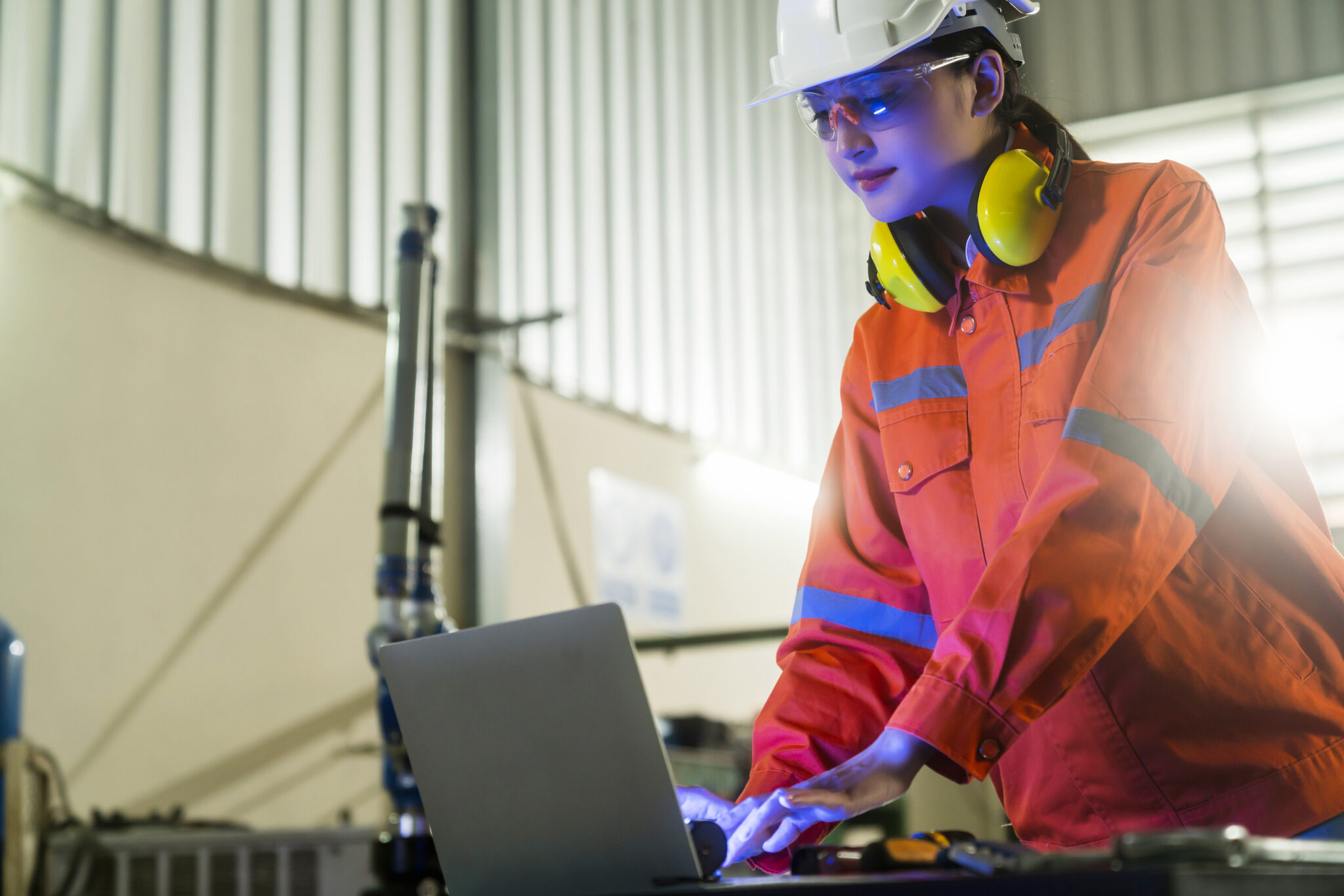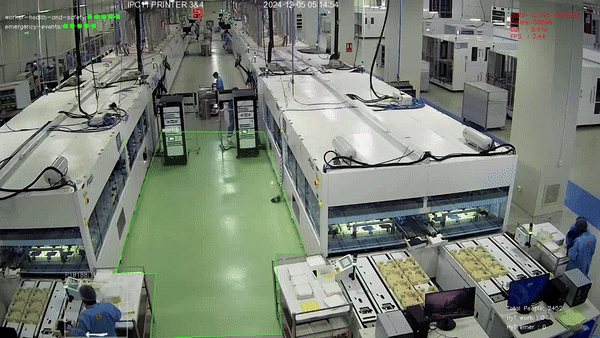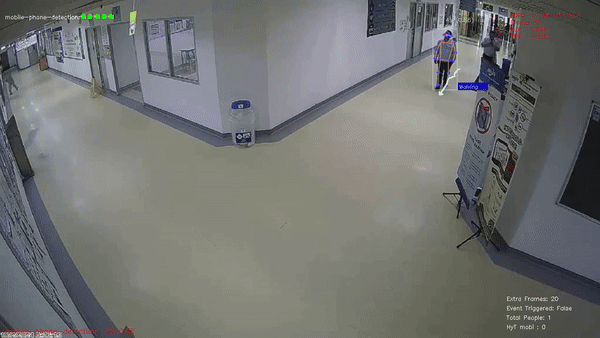AI for Workplace Safety: Kickstart Your Safety Journey with Computer Vision

See It In Action

Safety AI Software in Action
See how Visionify's Safety AI Software monitors workplace safety in real-time
Example Videos
Safety AI Software in Action
See how Visionify's Safety AI Software monitors workplace safety in real-time
Forklift Zone Monitoring with Vision AI
See how Vision AI monitors forklift zones in real-time to prevent accidents
Hard Hat Compliance in Manufacturing
Vision AI PPE Compliance for Manufacturing
Key Takeaways
- Proactive Protection: Computer vision AI detects hazards before they cause accidents
- Continuous Monitoring: Provides 24/7 safety surveillance without human limitations
- Automated Compliance: Ensures adherence to safety protocols and regulations
- Multiple Applications: From PPE detection to ergonomic risk assessment
- Data-Driven Insights: Generates valuable safety analytics for ongoing improvement
The Evolution of Workplace Safety
Workplace safety has evolved from a regulatory obligation to a core business value. Organizations worldwide recognize that safe workplaces are not only legally required but also more productive, profitable, and engaging for employees. However, traditional safety approaches face significant implementation challenges.
The gap between safety policies and their consistent execution creates vulnerabilities that can lead to injuries, lost productivity, and compliance issues. This is where artificial intelligence, specifically computer vision technology, is transforming workplace safety management.
 AI monitoring at Workplace
AI monitoring at Workplace
Why AI for Workplace Safety?
Traditional safety management relies heavily on manual inspections, human observation, and reactive measures after incidents occur. These approaches, while valuable, have inherent limitations:
- Inconsistent Coverage: Human inspections are periodic rather than continuous
- Observer Fatigue: Attention and vigilance naturally decline over time
- Subjective Assessment: Different observers may evaluate the same situation differently
- Delayed Response: Issues may go unnoticed until routine inspections
- Limited Data Collection: Manual processes capture only snapshots of safety conditions
Computer vision AI addresses these limitations by providing continuous, objective, and comprehensive safety monitoring that complements existing safety programs.
How Computer Vision Transforms Safety Management
Computer vision is a field of artificial intelligence that enables computers to interpret and understand visual information. When applied to workplace safety, this technology creates a powerful system for hazard detection and prevention.
The process works by analyzing video feeds from standard security cameras through sophisticated algorithms trained to recognize specific safety concerns. When the system detects a potential hazard or compliance issue, it immediately alerts designated personnel, enabling rapid response.
Key Applications of Computer Vision in Workplace Safety
1. PPE Compliance Monitoring
Computer vision can verify that workers are wearing required personal protective equipment such as hard hats, safety glasses, gloves, and high-visibility clothing. The technology can detect PPE violations in real-time and send alerts to supervisors, helping ensure consistent compliance across the facility.
 Computer vision detecting proper PPE usage in a manufacturing environment
Computer vision detecting proper PPE usage in a manufacturing environment
2. Slip and Fall Prevention
With 26% of workplace injuries caused by slips, trips, and falls, computer vision offers significant prevention benefits. The technology can identify potential hazards like spills, obstacles, or wet floors, while also detecting actual fall incidents to enable immediate response.
3. Early Smoke and Fire Detection
Traditional smoke detectors activate only when smoke reaches them. Computer vision can visually identify the earliest signs of smoke or fire from a distance, providing critical extra minutes for evacuation and emergency response. This early detection capability is especially valuable in industrial settings where fires cause billions in damages annually.
4. Restricted Area Monitoring
Computer vision can establish virtual boundaries around dangerous equipment, electrical panels, or other hazardous areas. The system alerts safety personnel when unauthorized individuals enter these zones, preventing potential accidents.
5. Mobile Phone Compliance
Computer vision can detect mobile phones in the workplace, ensuring employees are focused on safety and not distracted by personal devices.
 Mobile phone compliance
Mobile phone compliance
6. Equipment and Vehicle Safety
In environments with moving equipment like forklifts or robotic systems, computer vision can monitor proximity between workers and machinery, preventing dangerous interactions and collisions.
Implementation Considerations
Implementing computer vision for workplace safety is straightforward and can be approached incrementally:
-
Start with High-Risk Areas: Begin implementation in areas with the greatest safety concerns or incident history.
-
Leverage Existing Infrastructure: Many solutions work with standard security cameras already installed in facilities.
-
Prioritize Privacy: Choose systems with privacy-preserving features like anonymization options.
-
Integrate with Safety Programs: Use computer vision as a complement to, not replacement for, existing safety initiatives.
-
Communicate Purpose: Ensure employees understand the technology is designed to protect them, not monitor performance.
The Business Case for Computer Vision Safety
Beyond the primary goal of protecting workers, computer vision safety systems deliver compelling business benefits:
-
Reduced Incident Costs: Fewer accidents mean lower workers' compensation claims and medical expenses.
-
Decreased Downtime: Safety incidents cause operational disruptions that impact productivity.
-
Enhanced Compliance: Automated monitoring reduces the risk of regulatory violations and associated penalties.
-
Improved Culture: Visible safety technology demonstrates organizational commitment to worker protection.
-
Data-Driven Improvement: Comprehensive safety analytics enable targeted program enhancements.
Conclusion
Computer vision AI represents a significant advancement in workplace safety technology. By providing continuous monitoring, early hazard detection, and automated compliance verification, these systems help organizations create safer work environments while reducing costs associated with workplace accidents.
As this technology continues to evolve, it will become an increasingly essential component of comprehensive safety programs across industries. Organizations that embrace these innovations demonstrate not only their commitment to worker wellbeing but also their forward-thinking approach to operational excellence.
Ready to transform your workplace safety program with computer vision AI? Contact Visionify today to learn how our solutions can help protect your workers and enhance your safety performance.
Frequently Asked Questions
Find answers to common questions about this topic
Want to learn more?
Discover how our Vision AI safety solutions can transform your workplace safety.
Schedule a DemoSchedule a Meeting
Book a personalized demo with our product specialists to see how our AI safety solutions can work for your business.
Choose a convenient time
Select from available slots in your timezone
30-minute consultation
Brief but comprehensive overview of our solutions
Meet our product experts
Get answers to your specific questions
Related Articles
Subscribe to our newsletter
Get the latest safety insights and updates delivered to your inbox.


